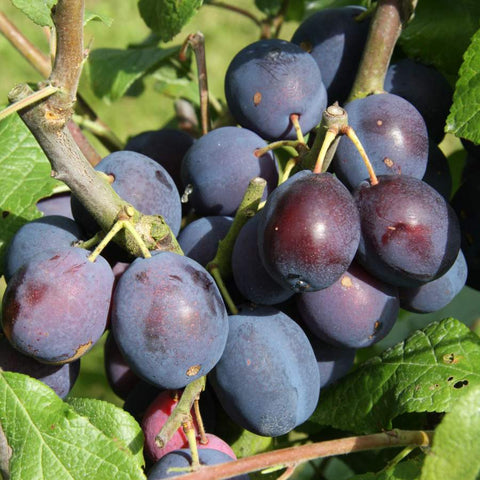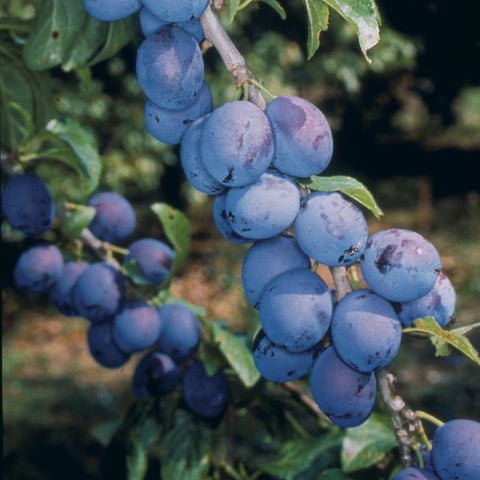Do you have an abundance of damson fruits and not sure what to do with them? Try our simple Damson Wine Recipe for a delicious homemade brew.

Damson fruits, closely related to plums, can be found across the UK, both in gardens and in the wild, making them perfect for foraging. When autumn arrives, these fruits are ripe and plentiful!
Unlike sweeter plum trees, damsons are rarely eaten fresh due to their high tannin levels and acidic flavour. But this makes them ideal for winemaking. The tannins naturally present in the fruit mean no extra additions are needed, unlike other fruit wines. These tannins also help damson wine age beautifully. While it may taste bitter in the first 12 months, with patience, the flavours will mellow and become rich over time.
How to Make Damson Wine
Gareth, the founder of Tree2mydoor, says:
“The Damson tree is special to me. It brings back childhood memories of picking damsons in my grandad’s garden—balanced precariously on a ladder! I remember helping my grandma make huge batches of damson jam and wine. There's something magical about homemade wine, especially damson wine, which has a rich, complex flavour. Be careful though—depending on the recipe, it can turn out quite powerful, like rocket fuel!”
Want to make your own? Follow our simple damson wine recipe below for a batch of delicious homemade wine.
Ingredients for Damson Wine:

- 3 lb Ripe Damsons
- 3 lb Granulated Sugar
- 1 Gallon Boiling Water (8 Pints)
- 1 tsp Wine Yeast
- Yeast Nutrient
- Pectic Enzyme
Directions for Making Damson Wine:
Choose ripe damsons—under-ripe fruit will produce poor wine. Even slightly overripe or a bit mouldy is fine, but avoid heavily mouldy fruits.
Start by soaking or washing the damsons in cold water to remove dirt or bugs. Then cut the damsons in half and remove the stones to avoid bitterness in the wine.
- Place the halved and de-stoned damsons in a large pan and add one gallon of cold water.
- Bring the water to a boil, then reduce to a simmer until the damsons are tender (but not mushy).
- Strain the mixture through a muslin cloth into a container, separating the fruit pulp from the liquid.
- Add the sugar, yeast, nutrient, and pectic enzyme, and stir until everything is dissolved.
- Once the mixture has cooled to room temperature, transfer it into a fermentation jar.
- Allow the wine to ferment. Once the jars are filled, rack and let the mixture clarify before bottling.
- The wine should be ready to drink in 6 months, but for a smoother flavour, let it age for at least 12 months.
Damson wine can taste bitter if sampled before the 12-month mark, but with patience, it will mellow and develop wonderfully complex flavours over time.


